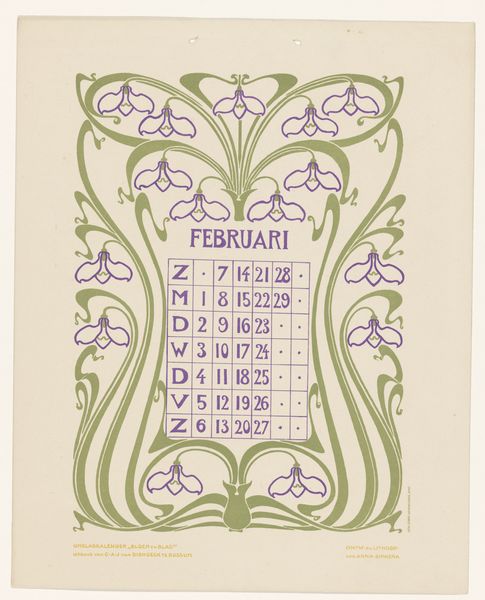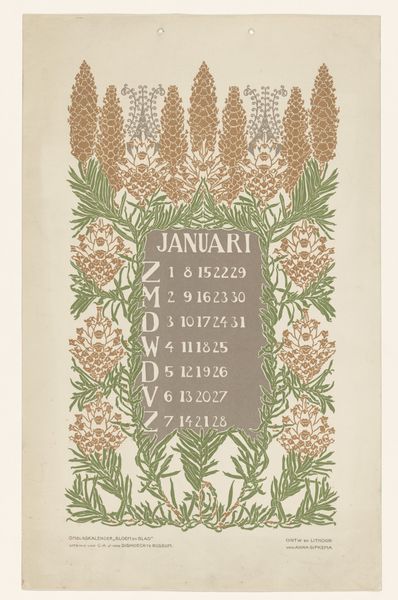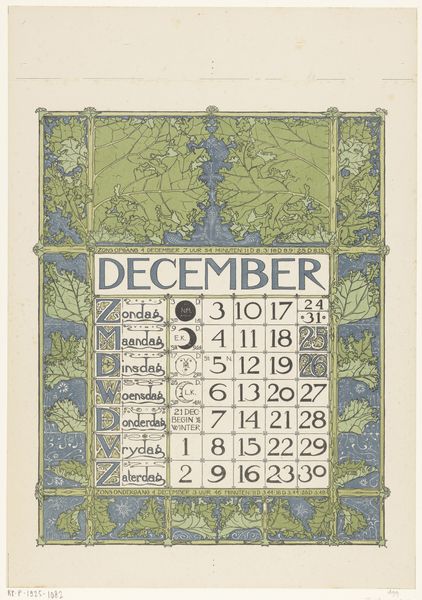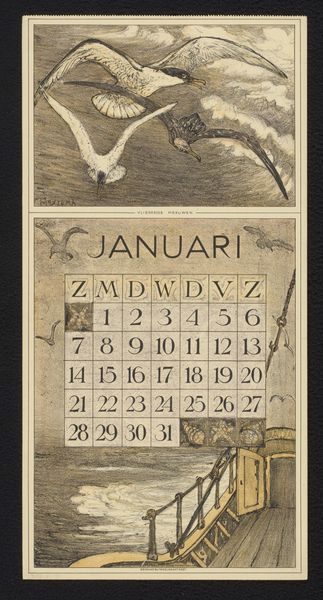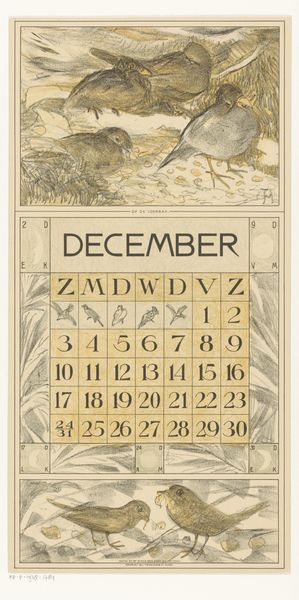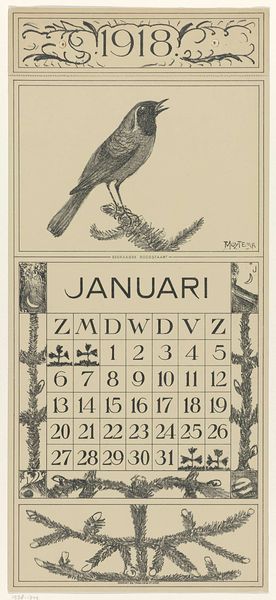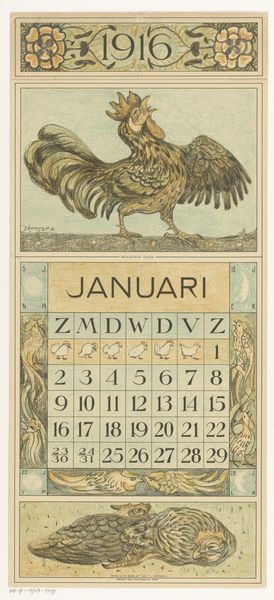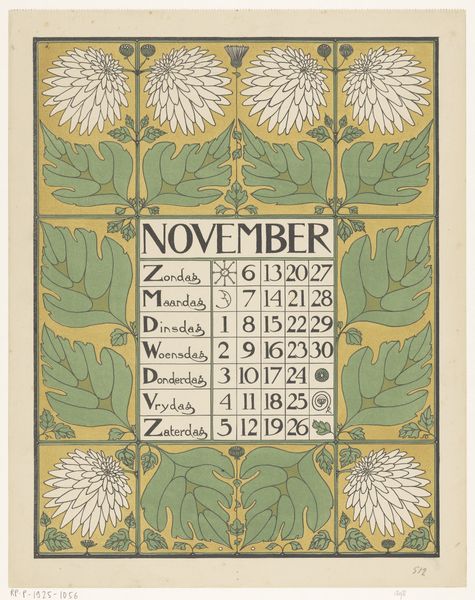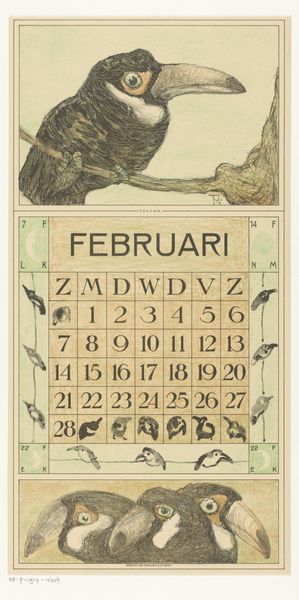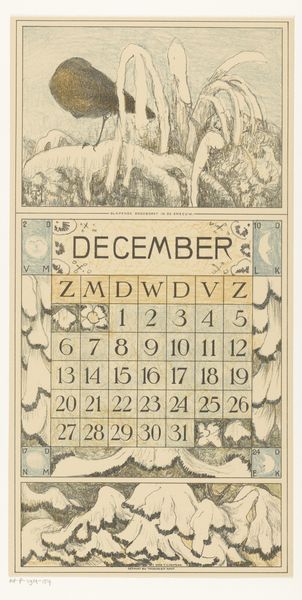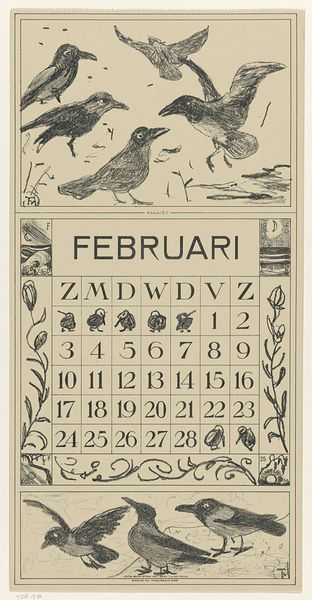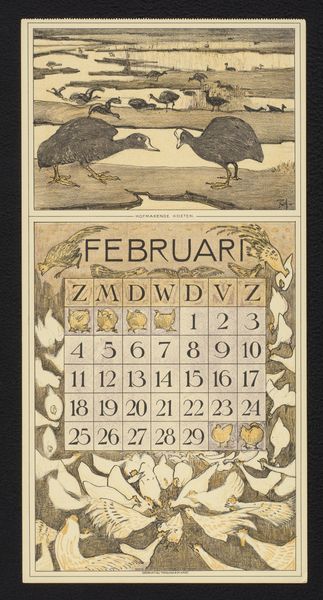
graphic-art, print, poster
#
graphic-art
#
natural stone pattern
#
naturalistic pattern
#
art-nouveau
# print
#
landscape
#
pattern design
#
repetitive shape and pattern
#
organic pattern
#
repetition of pattern
#
vertical pattern
#
intricate pattern
#
pattern repetition
#
decorative-art
#
layered pattern
#
poster
Dimensions: height 357 mm, width 284 mm
Copyright: Rijks Museum: Open Domain
Theo Nieuwenhuis created this calendar page for January 1898 using lithography. Its dominant visual features are the symmetrical arrangement of pinecones and foliage rendered in muted greens and browns, set against a pale grid that holds the month's dates. This interplay of organic and geometric forms evokes a sense of natural order. The composition highlights the principles of Art Nouveau, which uses natural forms to challenge the industrial aesthetic that preceded it. Observe how the stylized pinecones and needles create a decorative yet functional design. Each element, from the lettering of 'JANUARI' to the subtle floral motifs, reflects a unified aesthetic vision. The calendar invites a reading of time itself as an organic process, framed by nature's enduring cycles. Notice the emphasis on line and the flat, decorative use of space. This reflects a rejection of traditional perspective, in favor of a surface-oriented design. This calendar serves not just as a practical tool, but as a statement—redefining the aesthetic values of its time.
Comments
No comments
Be the first to comment and join the conversation on the ultimate creative platform.
